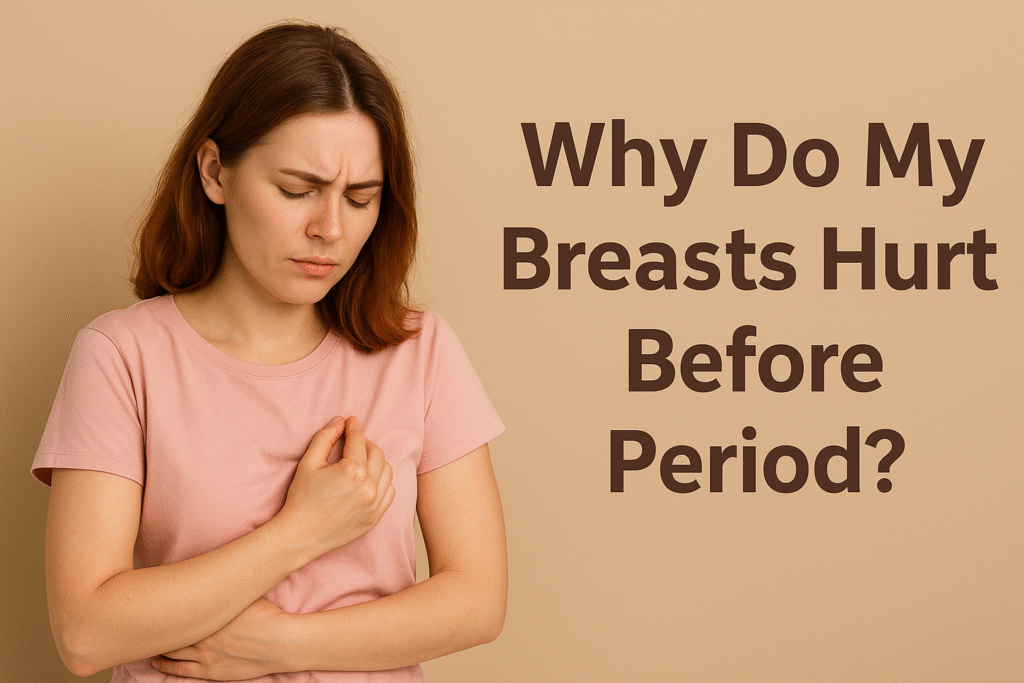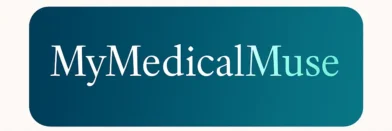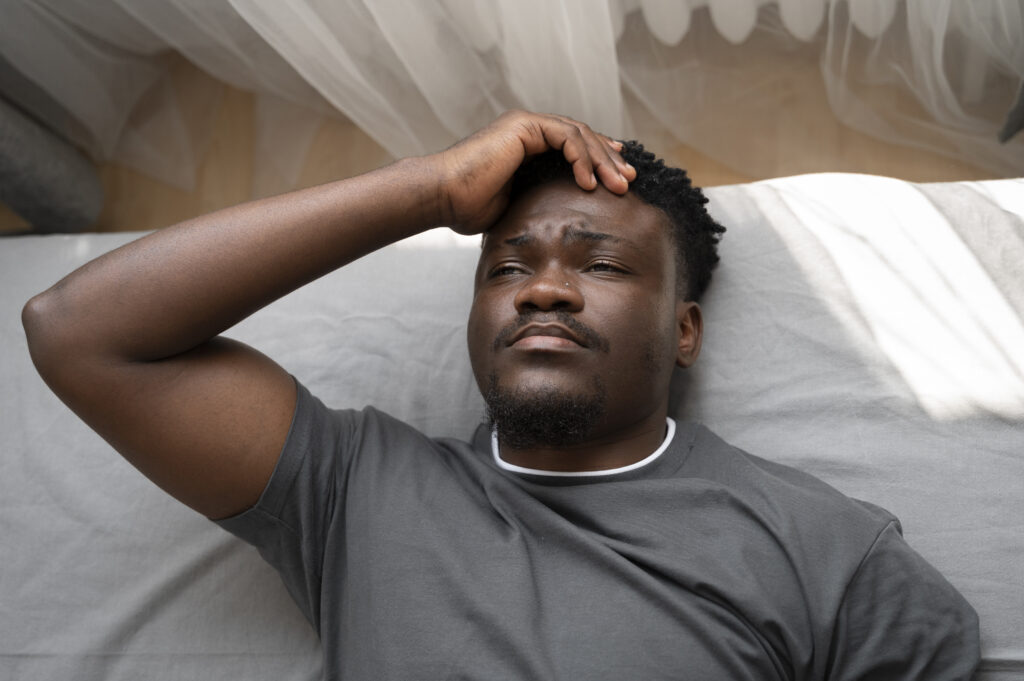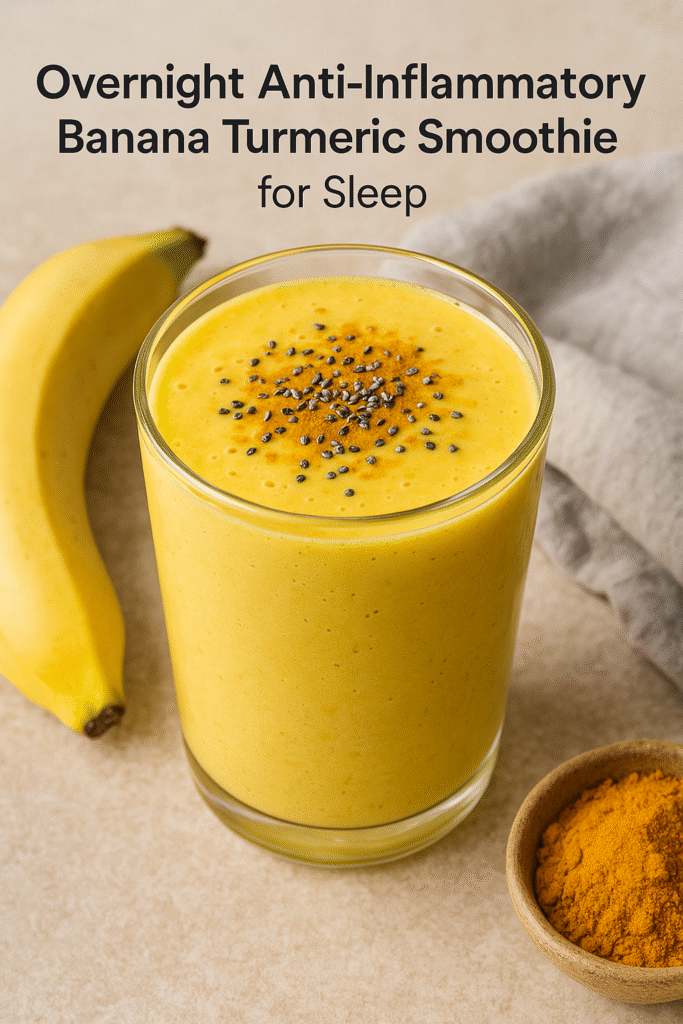
⚠️ Affiliate Disclaimer: This post may contain affiliate links, which means I may earn a small commission — at no extra cost to you — if you make a purchase through one of these links. I only recommend products or services I genuinely trust and believe can provide value. Thank you for supporting My Medical Muse!
Breast Pain Before Period: 7 Powerful Causes, Symptoms, and Relief Tips
Why Do My Breasts Hurt Before Period? Causes, Symptoms, and Relief
Breast pain before your period is one of the most common premenstrual symptoms. Research shows that up to 70% of women experience some level of discomfort in the days leading up to menstruation. The pain can vary widely, some women feel a dull tenderness, while others notice swelling, heaviness, or sensitivity that makes wearing a bra or lying on the chest uncomfortable.
If you’ve ever wondered, “Why do my breasts hurt before period?”, the answer usually lies in hormonal changes. This type of pain, called cyclical mastalgia, is closely tied to the menstrual cycle and is generally considered normal. Still, because breast pain can sometimes indicate other conditions, it’s important to recognize the difference between harmless discomfort and symptoms that may require medical attention.
In this comprehensive guide, we’ll explain everything you need to know about breast pain before periods, including:
- Why it happens- the hormonal and biological processes that trigger discomfort
- Signs and symptoms- how to recognize normal cyclical pain versus concerning changes
- When to worry- red flags that suggest a medical checkup is needed
- Home remedies and treatments- practical steps to relieve discomfort naturally or with medication
- Prevention strategies- how to reduce breast pain in future cycles
What Causes Breast Pain Before Period?
The most common reason breasts hurt before a period is the hormonal shift that happens naturally throughout the menstrual cycle. These hormonal changes affect breast tissue, blood flow, and fluid balance, often leading to discomfort that comes and goes with each cycle. Below are the main contributing factors:
1. Hormonal Fluctuations
Hormones are the primary drivers of premenstrual breast pain:
- Estrogen surge (follicular phase): During the first half of the menstrual cycle, estrogen levels gradually rise. This stimulates the growth of breast ducts and can make breasts feel fuller or more sensitive.
- Progesterone peak (luteal phase): After ovulation, progesterone levels increase significantly. This hormone promotes the growth of milk glands in preparation for a possible pregnancy. The added tissue growth, along with fluid buildup, often causes swelling, tenderness, and heaviness.
- These hormonal shifts increase blood flow and trigger fluid retention, which together explain why breasts may feel lumpy, swollen, or sore in the days before menstruation.
2. Water Retention
Premenstrual hormonal changes don’t just affect the breasts, they also alter how your body retains water. This is why many women experience:
- General bloating in the abdomen
- Swelling in the hands, feet, or ankles
- A sense of fullness in the breasts, extra fluid in the breast tissue stretches the skin and increases pressure on surrounding nerves, amplifying discomfort.
3. Prolactin Sensitivity
Prolactin is a hormone responsible for stimulating breast development and milk production. Some women’s breast tissue is more sensitive to prolactin, which can cause pronounced tenderness and pain in the luteal phase (just before menstruation), even when actual prolactin levels are within a normal range.
4. Fibrocystic Breast Changes
Women with fibrocystic breast tissue often notice more intense pain before their period. Fibrocystic changes refer to noncancerous lumps, cysts, or rope-like textures in the breast. While harmless, these changes become more pronounced when fluid retention occurs, making the breasts feel extra lumpy, swollen, and sensitive in the days leading up to menstruation.
5. Lifestyle Factors
Beyond hormones, certain lifestyle habits can make premenstrual breast pain worse:
- Caffeine intake (coffee, tea, chocolate, soft drinks) can overstimulate breast tissue and increase sensitivity.
- High-fat diets may affect estrogen metabolism, influencing hormone levels.
- Stress disrupts hormonal balance and may worsen PMS symptoms, including breast tenderness.
- Smoking and alcohol contribute to inflammation, which may heighten breast pain.
Symptoms of Breast Pain Before Period
The way breast pain presents can vary from woman to woman. Some experience only mild tenderness, while others feel significant discomfort that interferes with daily life. Common symptoms include:
- Tenderness or soreness: A dull, aching pain in one or both breasts.
- Heaviness or fullness: Breasts may feel heavy, swollen, or enlarged.
- Swelling or puffiness: Noticeable increase in breast size or tightness before menstruation.
- Pain radiating outward: Discomfort may extend to the underarms, shoulders, or arms.
- Lumpy or rope-like texture: Particularly common in women with fibrocystic breast changes.
- Sharp or burning pain (less common): Some women experience more localized, sharper sensations.
Timing of Symptoms
Premenstrual breast pain usually follows a predictable cycle:
- Symptoms begin 5-10 days before menstruation, as progesterone peaks.
- Pain typically worsens gradually, peaking just before the period starts.
- Discomfort usually subsides once bleeding begins or within the first few days of menstruation, when hormone levels drop.
Is Breast Pain Before Period Normal?
Yes, experiencing breast pain before your period is very common and usually considered normal. This type of pain, called cyclical mastalgia, follows a predictable pattern: it begins in the days leading up to menstruation and eases once your period starts, because it is directly linked to natural hormonal fluctuations, it is rarely a cause for concern.
However, what is “normal” breast pain for one woman may feel unusual for another. The key is recognizing what is typical for your cycle. If the pain suddenly changes in intensity, location, or duration, it’s important to monitor closely and seek medical advice if it persists.
When Should You Worry About Breast Pain?
Although most pre-period breast discomfort is harmless, there are situations where it may signal an underlying issue. You should speak with a healthcare provider if you notice any of the following:
- Breast pain unrelated to your cycle: Pain that doesn’t follow your monthly hormonal rhythm could point to another condition.
- Pain localized to one spot: Cyclical pain usually affects both breasts or large areas, not a single pinpointed region.
- Persistent lumps: If you feel a lump that does not shrink or disappear after your period, it needs medical evaluation.
- Nipple discharge: Any spontaneous discharge, especially if it is bloody, clear, or occurs without squeezing, warrants investigation.
- Visible skin changes: Redness, dimpling, thickening, or rashes over the breast may indicate infection or, rarely, breast cancer.
- Progressively worsening pain: If breast pain intensifies over time instead of following your usual monthly pattern, it should be checked.
Most of these signs are not linked to cancer, but ruling out serious conditions is always the safest approach.
Medical Conditions That May Cause Breast Pain
While cyclical mastalgia is the most common cause, several medical conditions can also lead to breast pain, especially if it occurs outside the typical premenstrual window:
1. Fibrocystic Breast Condition
A benign (noncancerous) condition where breast tissue feels rope-like, lumpy, or nodular. Symptoms often worsen in the days before a period due to fluid buildup.
2. Mastitis
An infection of the breast tissue, most often seen in breastfeeding women. It causes pain, swelling, redness, and sometimes fever. Without treatment, it can develop into an abscess.
3. Breast Cysts
These are fluid-filled sacs inside the breast. They often enlarge and become painful in the luteal phase, then ease after menstruation. While usually benign, cysts can mimic lumps and should be examined by a doctor.
4. Hormonal Imbalances
Conditions such as thyroid disorders, polycystic ovary syndrome (PCOS), or other endocrine problems can disrupt normal hormone levels, leading to breast discomfort at unexpected times in the cycle.
5. Medications
Certain drugs list breast pain as a side effect, including:
- Hormonal contraceptives (birth control pills, patches, injections)
- Fertility treatments (which manipulate estrogen and progesterone levels)
- Antidepressants, particularly selective serotonin reuptake inhibitors (SSRIs)
If you notice a link between new medications and breast tenderness, consult your doctor for alternatives.
How to Relieve Breast Pain Before Period
While breast pain before menstruation is usually harmless, it can be uncomfortable enough to interfere with daily life. Fortunately, a variety of strategies, ranging from simple lifestyle changes to medical treatments can help reduce discomfort.
1. Lifestyle Remedies
- Wear a supportive bra
Choosing the right bra can make a significant difference. A well-fitted sports bra or full-support bra helps reduce strain on breast tissue and ligaments, especially during physical activity. For women with larger breasts, wearing a supportive bra even at night may ease discomfort. - Apply warm or cold compresses
Heat improves circulation and relaxes tense tissue, making it useful for dull, aching pain. Cold packs, on the other hand, reduce swelling and numb sharp tenderness. Alternating between the two can be particularly effective. - Limit caffeine and alcohol
Both caffeine and alcohol can affect hormone levels and promote fluid retention, which makes breast tissue feel more tender. Cutting back in the luteal phase (the 1-2 weeks before your period) often helps. - Reduce salt intake
Excess sodium contributes to water retention, bloating, and swelling in the breasts. Minimizing salty snacks and processed foods can reduce that heavy, puffy feeling. - Exercise regularly
Physical activity improves blood circulation, reduces overall fluid buildup, and balances hormone levels. Even light activities like brisk walking, yoga, or swimming can ease PMS-related discomfort. - Stress management
Stress triggers hormonal changes (particularly cortisol spikes) that may worsen PMS and breast pain. Relaxation practices like yoga, meditation, journaling, or deep breathing can help regulate stress hormones and improve overall balance.
2. Dietary Adjustments
- Increase fiber intake
Foods high in fiber, such as whole grains, vegetables, beans, and fruits help the body metabolize and eliminate excess estrogen. This can lessen breast tenderness by reducing hormonal fluctuations. - Eat omega-3 rich foods
Omega-3 fatty acids, found in fish (salmon, mackerel, sardines), flaxseeds, chia seeds, and walnuts, have natural anti-inflammatory properties that reduce swelling and pain. - Take vitamin and mineral supplements
Certain nutrients may reduce cyclical breast discomfort:- Vitamin E: Helps reduce sensitivity by balancing hormones and improving circulation.
- Vitamin B6: Plays a role in neurotransmitter regulation and may reduce PMS symptoms overall.
- Magnesium: Helps relax muscle tissue and may ease breast tenderness as well as bloating and mood changes.
3. Medications
For women with moderate to severe pain, medication may be helpful:
- Over-the-counter pain relievers
Nonsteroidal anti-inflammatory drugs (NSAIDs) like ibuprofen or naproxen reduce inflammation and provide quick relief. Acetaminophen (paracetamol) is another option for pain control. - Hormonal birth control
Birth control pills, patches, or IUDs can help regulate hormone fluctuations, often reducing cyclical breast pain in women with severe PMS or irregular cycles. - Prescription hormonal therapies
In rare, severe cases, a doctor may prescribe medications like danazol (a synthetic hormone) or tamoxifen (an estrogen modulator). These are generally reserved for women who do not respond to other treatments because of potential side effects.
Natural Remedies for Breast Pain Before Period
Many women prefer to manage breast pain with natural remedies, especially if symptoms are mild. While research results vary, the following options have shown promise:
- Evening Primrose Oil
Rich in gamma-linolenic acid (GLA), this oil is thought to help balance hormones and reduce breast pain. Some studies suggest it may improve cyclical mastalgia, though results are mixed. - Flaxseed
Both flaxseed oil and ground flaxseeds provide lignans, compounds that may influence estrogen metabolism and reduce PMS-related discomfort. - Chasteberry (Vitex agnus-castus)
A herbal supplement widely studied for PMS relief, chasteberry appears to regulate prolactin levels, which may reduce breast tenderness. - Massage with essential oils
Gentle massage can improve circulation and reduce swelling. When combined with oils such as lavender, chamomile, or rose, it may also have a calming effect on both the body and mind.
Always consult a healthcare provider before starting supplements, especially if you are pregnant, breastfeeding, or taking other medications.
How to Prevent Breast Pain in Future Cycles
While it may not be possible to eliminate premenstrual breast pain completely, certain preventive strategies can make each cycle more manageable:
- Maintain a balanced diet
Focus on whole foods like vegetables, fruits, lean proteins, and whole grains. Limit processed foods, refined sugar, and fried meals, which can contribute to inflammation and worsen PMS symptoms. - Stay active and maintain a healthy weight
Regular exercise not only supports hormone balance but also helps prevent excess fat storage. Since fat tissue produces estrogen, carrying extra weight may increase estrogen levels and intensify breast discomfort. - Track your cycle
Using a period-tracking app allows you to predict when symptoms are most likely to appear. Being prepared means you can adjust your lifestyle such as cutting back on caffeine or wearing more supportive bras in advance. - Wear supportive bras daily
A well-fitting bra is important not only during exercise but throughout the day. Proper support reduces breast strain and can help prevent pain from worsening in the luteal phase. - Reduce stimulants
Caffeine and chocolate are known to heighten breast sensitivity. Cutting back, especially during the second half of your cycle, can significantly reduce tenderness.
Breast Pain Before Period vs. Pregnancy Symptom
A common question many women ask is: How do I know if breast pain is from PMS or early pregnancy? While the sensations may feel similar, there are key differences:
- PMS-related breast pain:
- Appears 5-10 days before menstruation.
- Usually eases once your period begins.
- Often accompanied by other PMS symptoms like bloating, mood swings, and cramps.
- Pregnancy-related breast pain:
- Tends to be more intense and persistent.
- Does not subside when your period would normally start.
- Often accompanied by breast enlargement, darkening of the areolas, and increased nipple sensitivity.
If your period is late and you notice unusual or prolonged breast pain, it may be worth taking a pregnancy test to clarify the cause.
Frequently Asked Questions
Why do my breasts hurt 2 weeks before my period?
- This usually happens due to hormonal changes around ovulation and the luteal phase, when progesterone levels peak. These shifts increase fluid retention and stimulate breast tissue, causing tenderness.
Does breast pain mean my period is coming?
- Yes. Breast tenderness is one of the most common signs of PMS and often indicates that menstruation will start within a few days.
Can breast pain be the only sign of PMS?
- Absolutely. While many women experience multiple PMS symptoms, some only notice breast pain before their period.
Should I see a doctor if my breasts always hurt before my period?
- Not necessarily. Cyclical breast pain is common and typically harmless. However, you should see a doctor if the pain is severe, occurs in only one breast, or is accompanied by new lumps, nipple discharge, or skin changes.
Can diet really affect breast pain?
- Yes. A diet high in salt, caffeine, alcohol, and processed foods can increase bloating, fluid retention, and inflammation, all of which make breast tenderness worse. On the other hand, a balanced diet with plenty of fiber, healthy fats, and nutrients can help regulate hormones and reduce discomfort.
Conclusion
Breast pain before your period is one of the most common premenstrual symptoms, affecting the majority of women at some point in their reproductive years. In most cases, it is the result of normal hormonal fluctuations that prepare the body for a possible pregnancy. While the discomfort can be frustrating, it is rarely a sign of something serious.
The good news is that there are many ways to manage this symptom. Lifestyle adjustments such as wearing properly fitted bras, reducing caffeine and salt, staying physically active, and practicing stress management often provide noticeable relief. For those with more severe or persistent pain, dietary changes, supplements, and medical treatments can also make a significant difference.
It’s important to remember that every woman’s cycle is unique. What feels normal for one person may be unusual for another. Tracking your symptoms over time can help you identify patterns and recognize when something changes. If breast pain becomes severe, one-sided, or comes with concerning symptoms like lumps, nipple discharge, or skin changes, consult a healthcare provider for further evaluation.
By understanding the underlying causes and taking proactive steps, you can manage premenstrual breast pain effectively and approach each cycle with more comfort and confidence.
👩⚕️ Need Personalized Health Advice?
Get expert guidance tailored to your unique health concerns through MuseCare Consult. Our licensed doctors are here to help you understand your symptoms, medications, and lab results—confidentially and affordably.
👉 Book a MuseCare Consult NowRelated Blog Post You Might Like:
- Yeast Infection vs Bacterial Vaginosis: 7 Essential Differences Explained
- First Trimester Fatigue: 7 Powerful Reasons You Feel Tired During Pregnancy
- 9 Critical Facts About Period-Like Bleeding in Early Pregnancy Every Woman Must Know
- How Long After Sex Can You Take a Pregnancy Test? 7 Crucial Facts
- Can You Get Pregnant on Your Period? 7 Key Facts Every Woman Should Know


